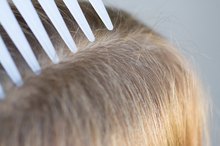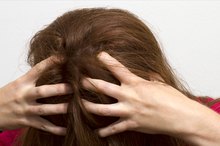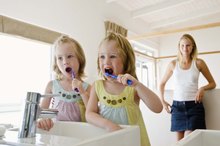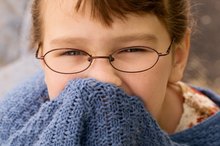How to Clean Your House After a Case of Head Lice
It's necessary to clean your house after a case of head lice to prevent a second infestation. Head lice can get into bedding, furniture, carpets, toys, hair brushes and other household items. Use these easy steps to clean your house after a case of head lice and keep them away for good.
Remove all bedding and wash in hot water with detergent. This includes sheets, mattress covers, pillow cases and the pillows themselves, if possible. This will kill any head lice or eggs remaining on the bedding.
How to Kill Lice on Furniture
Learn More
Vacuum the entire home, including all rugs, mats and carpeted areas. Use a flea-killing carpet powder for extra protection, as it may also kill any head lice that are in the carpets. Take the vacuum bag immediately to an outdoor trashcan or dumpster after vacuuming, or empty the vacuum receptacle outside.
Wipe down any vinyl or leather furniture with a warm, wet cloth to remove any attached head lice or eggs. Vacuum cloth-covered furniture, and immediately remove the vacuum bag from the home, as described above.
How to Remove Lice From Helmets
Learn More
Wash or vacuum any stuffed animals that may have been in contact with head lice, such as your child's teddy bears or other plush toys. Place them in the dryer on hot heat for 30 minutes to kill any eggs or head lice that might remain.
Clean all hairbrushes and combs by removing excess hair, and soaking them in a solution of water combined with head lice shampoo for at least half an hour. Rinse thoroughly before using again. Wash all towels, wash cloths, and robes in hot water with detergent.
Tips
Some people recommend sealing stuffed animals in plastic bags for two weeks, as this will suffocate any eggs or lice. However, this is an extreme action and may only be necessary in the case of an extreme head lice infestation.
Related Articles
References
- InformedHealth.org [Internet]. Cologne, Germany: Institute for Quality and Efficiency in Health Care (IQWiG); 2006-. Head lice: Overview. 2008 Mar 5 [Updated 2018 Dec 13].Available from: https://www.ncbi.nlm.nih.gov/books/NBK279329/
- Rassami W, Soonwera M. Epidemiology of pediculosis capitis among schoolchildren in the eastern area of Bangkok, Thailand. Asian Pac J Trop Biomed. 2012;2(11):901–904. doi:10.1016/S2221-1691(12)60250-0
- van der Wouden JC, Klootwijk T, Le Cleach L, et al. Interventions for treating head lice. Cochrane Database Syst Rev. 2018;2018(5):CD009321. Published 2018 May 22. doi:10.1002/14651858.CD009321.pub2
- Bin Saif GA, Ericson ME, Yosipovitch G. The itchy scalp--scratching for an explanation. Exp Dermatol. 2011;20(12):959–968. doi:10.1111/j.1600-0625.2011.01389.x
- Head lice infestations: A clinical update. Paediatr Child Health. 2004;9(9):647–657. doi:10.1093/pch/9.9.647
- Izri A, Chosidow O. Efficacy of machine laundering to eradicate head lice: recommendations to decontaminate washable clothes, linens, and fomites. Clin Infect Dis. 2006;42(2):e9–e10. doi:10.1086/499105
- Değerli S, Malatyalı E, Mumcuoğlu KY. Head lice prevalence and associated factors in two boarding schools in Sivas. Turkiye Parazitol Derg. 2013;37(1):32–35. doi:10.5152/tpd.2013.08
- Greive KA, Barnes TM. In vitro comparison of four treatments which discourage infestation by head lice. Parasitol Res. 2012;110(5):1695–1699. doi:10.1007/s00436-011-2687-7
- Devore CD, Schutze GE. Head lice. Pediatrics. 2015;135(5):e1355-65.
- Devore CD, Schutze GE; Council on School Health and Committee on Infectious Diseases, American Academy of Pediatrics. Head lice. Pediatrics. 2015 May;135(5):e1355-65. doi:10.1542/peds.2015-0746
Tips
- Some people recommend sealing stuffed animals in plastic bags for two weeks, as this will suffocate any eggs or lice. However, this is an extreme action and may only be necessary in the case of an extreme head lice infestation.
Writer Bio
Willow Sidhe is a freelance writer living in the beautiful Hot Springs, AR. She is a certified aromatherapist with a background in herbalism. She has extensive experience gardening, with a specialty in indoor plants and herbs. Sidhe's work has been published on numerous Web sites, including Gardenguides.com.






